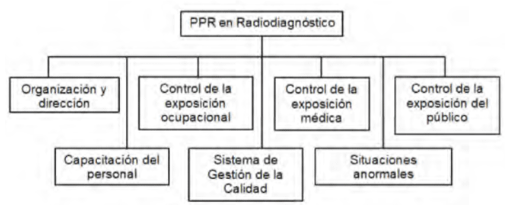Radiation protection programs for diagnostic radiology. Contribution to the strengthening of safety
Main Article Content
Abstract
The improvement of the Health System in Cuba from 1996 to the present, characterized by technological renovation and modernization; has allowed the introduction and development of innovative studies in diagnostic radiology (including dental) and interventional procedures guided by images. However, the benefit associated with the use of ionizing radiation has also led to an increase in doses and radiological risk for occupationally exposed workers, patients and members of the public. Therefore, the practice of diagnostic radiology should be carried out with high standards of radiation protection and safety culture.
There are regulatory documents issued by the Ministry of Public Health wish establish the general precepts for the authorization of the practice of diagnostic radiology. However, the radiological protection programs have not been adequately developed and established in the institutions of the country where this practice has been implemented, and the application processes for the corresponding authorizations has not been organized.
In order to develop Radiation Protection Programs for the practice of medical radiodiagnosis, we worked in two reference centers of our health system, where have been performed complex diagnostic and interventional procederes. Taking into account the magnitude of the risk associated with the development of the practice in each one of them, the procedures, instructions, records and the responsibilities of the personnel were established. The results obtained have contributed to the strengthening of the radiation protection and safety of the practice in both institutions where the programs have been implemented. They have started the process to obtain the Institutional Licenses, constituting the first experience in our country.
Article Details

This work is licensed under a Creative Commons Attribution-NonCommercial 4.0 International License.
Aquellos autores/as que tengan publicaciones con esta revista, aceptan los términos siguientes:
- Los autores/as conservarán sus derechos de autor y garantizarán a la revista el derecho de primera publicación de su obra, el cuál estará simultáneamente sujeto a la Licencia Creative Commons Attribution-NonCommercial 4.0 International (CC BY-NC 4.0) que permite a terceros compartir la obra siempre que se indique su autor y su primera publicación esta revista. Bajo esta licencia el autor será libre de:
- Compartir — copiar y redistribuir el material en cualquier medio o formato
- Adaptar — remezclar, transformar y crear a partir del material
- El licenciador no puede revocar estas libertades mientras cumpla con los términos de la licencia
Bajo las siguientes condiciones:
- Reconocimiento — Debe reconocer adecuadamente la autoría, proporcionar un enlace a la licencia e indicar si se han realizado cambios. Puede hacerlo de cualquier manera razonable, pero no de una manera que sugiera que tiene el apoyo del licenciador o lo recibe por el uso que hace.
- NoComercial — No puede utilizar el material para una finalidad comercial.
- No hay restricciones adicionales — No puede aplicar términos legales o medidas tecnológicas que legalmente restrinjan realizar aquello que la licencia permite.
- Los autores/as podrán adoptar otros acuerdos de licencia no exclusiva de distribución de la versión de la obra publicada (p. ej.: depositarla en un archivo telemático institucional o publicarla en un volumen monográfico) siempre que se indique la publicación inicial en esta revista.
- Se permite y recomienda a los autores/as difundir su obra a través de Internet (p. ej.: en archivos telemáticos institucionales o en su página web) antes y durante el proceso de envío, lo cual puede producir intercambios interesantes y aumentar las citas de la obra publicada. (Véase El efecto del acceso abierto).
La Revista Nucleus solo aceptará contribuciones que no hayan sido previamente publicados y/o procesados, por otra publicación. Cualquier violación ese sentido será considerada una falta grave por parte del autor principal lo cual será objeto valoración por parte del Consejo Editorial, el cual dictaminará al respecto.
References
[2]. Ministerio de Salud Pública. Reglamento de autorización de prácticas asociadas al radiodiagnóstico médico. Resolución Ministerial No. 257. La Habana: MINSAP, 2000.
[3]. Ministerio de Salud Pública. Requisitos técnicos de seguridad en radiodiagnóstico médico. Resolución Ministerial No. 19. La Habana: MINSAP, 2001.
[4]. Comisión Internacional de Protección Radiológica. Protección radiológica en medicina. ICRP Publicación 105. Sociedad Argentina de Radioprotección, 2007.
[5]. International Commission on Radiological Protection. Diagnostic reference levels in medical imaging Publication. ICRP 135. Annals of the ICRP. 2017; 46(1).
[6]. Sociedad Española de Física Médica/Sociedad Española de Protección Radiológica/Sociedad Española de Radiología Médica. Protocolo español de Control de Calidad en Radiodiagnóstico. Revisión 2011. España: Senda; 2012.
[7]. Comisión Internacional de Protección Radiológica. Capacitación y entrenamiento en protección radiológica para procedimientos diagnósticos e intervencionistas. ICRP Publicación 113. Sociedad Argentina de Radioprotección, 2015.

